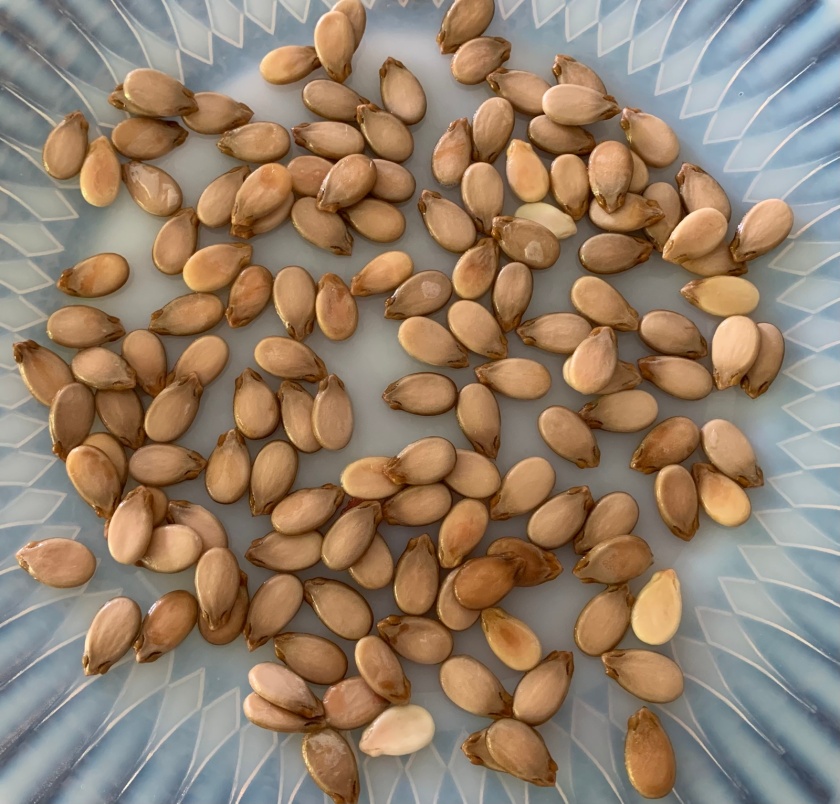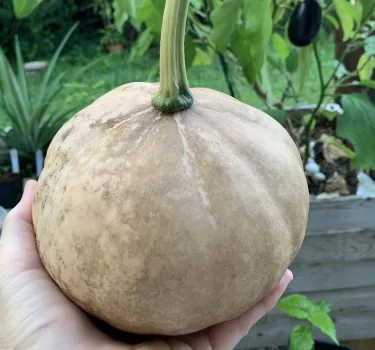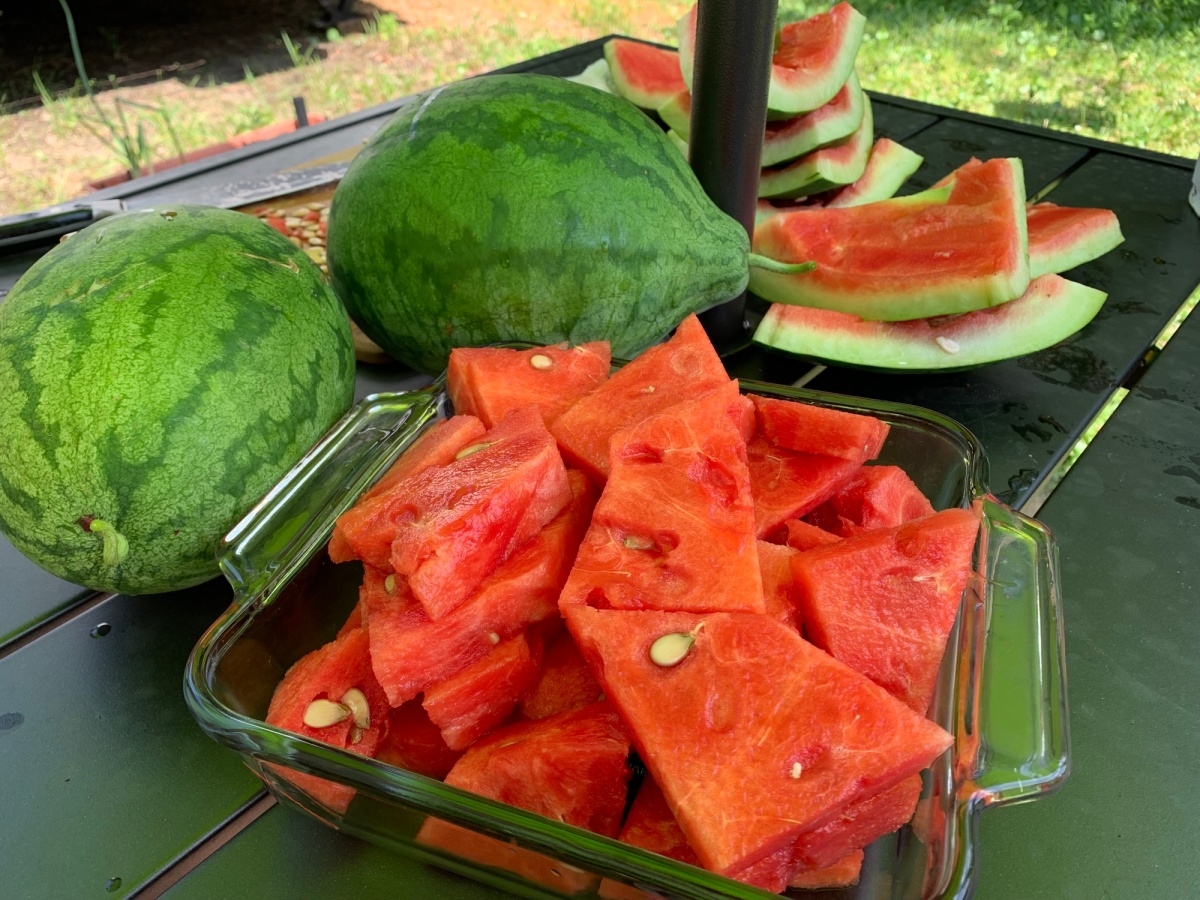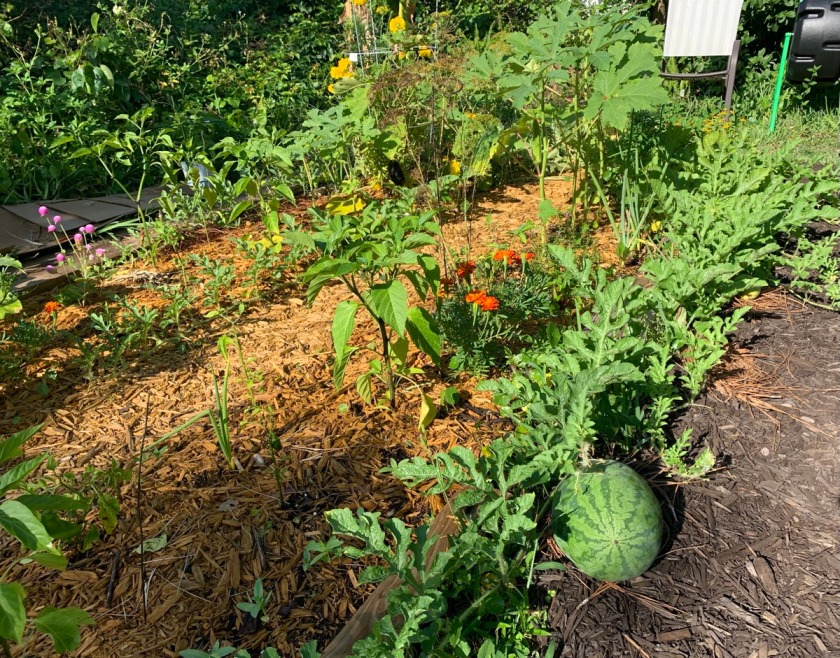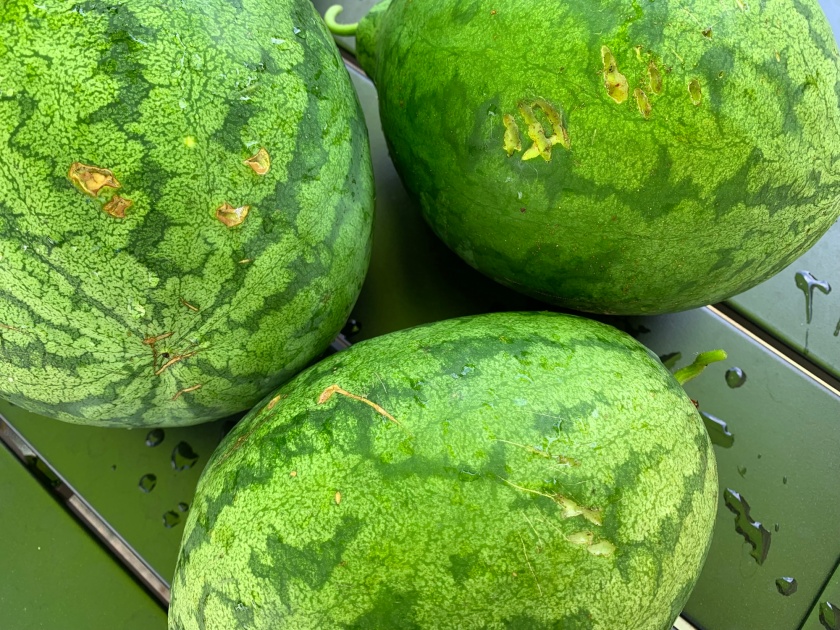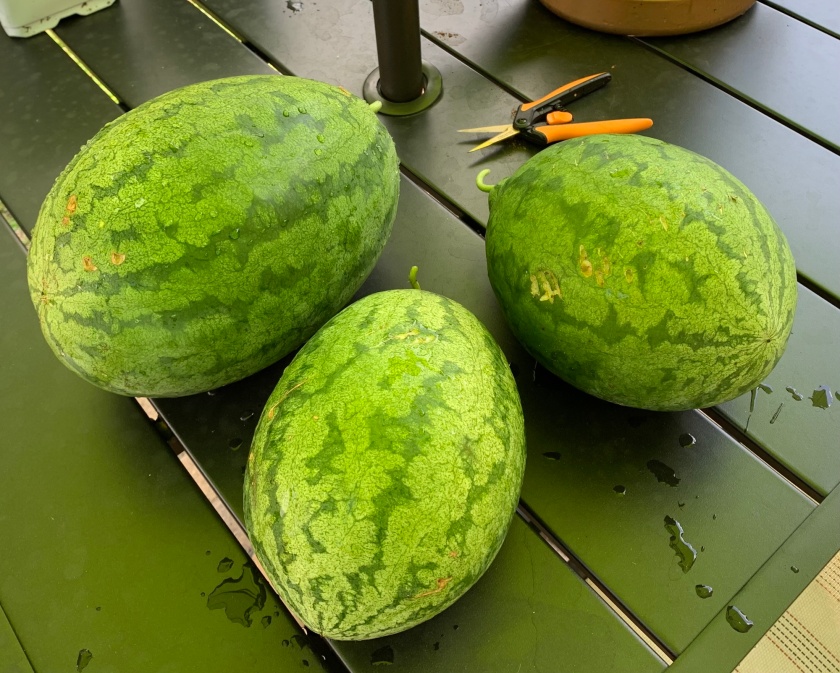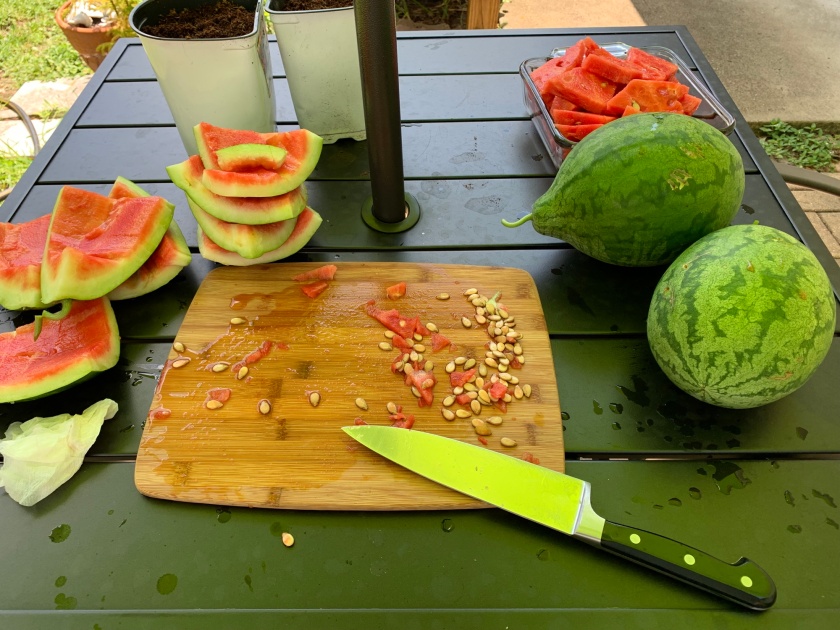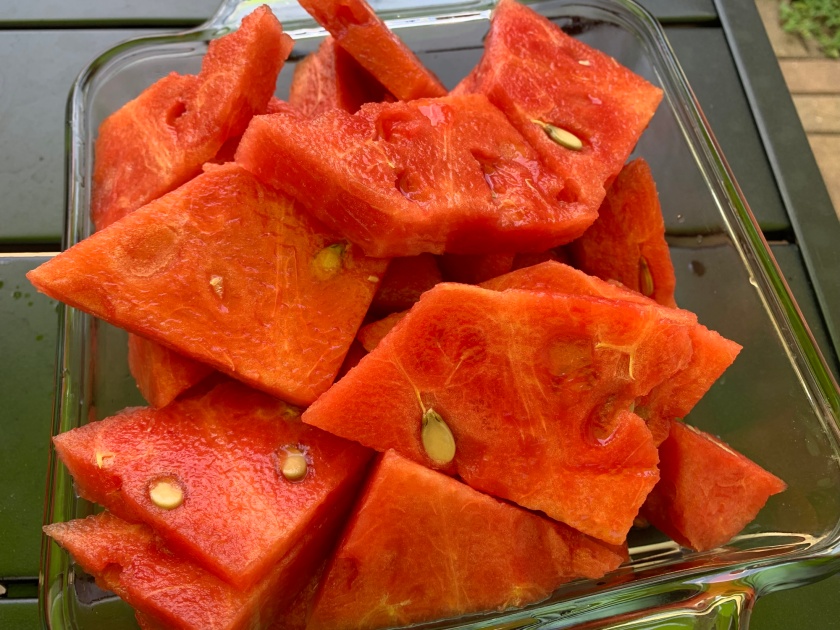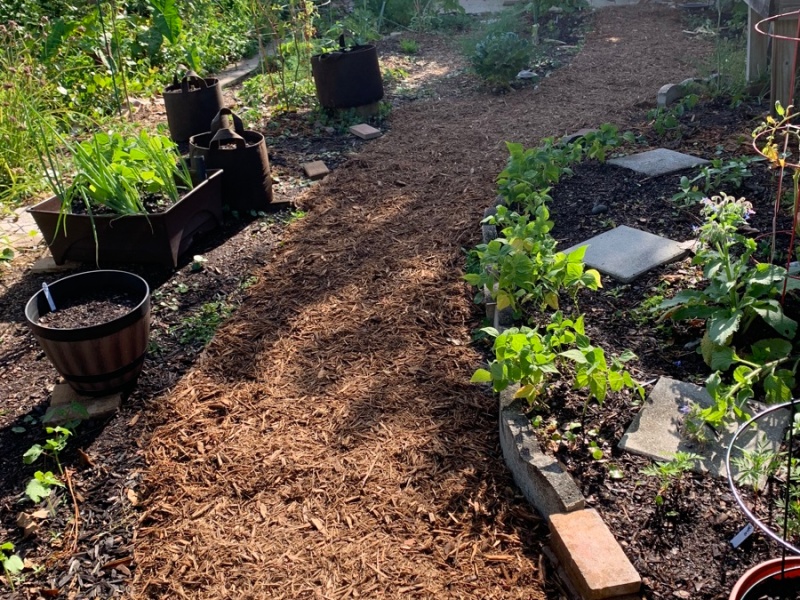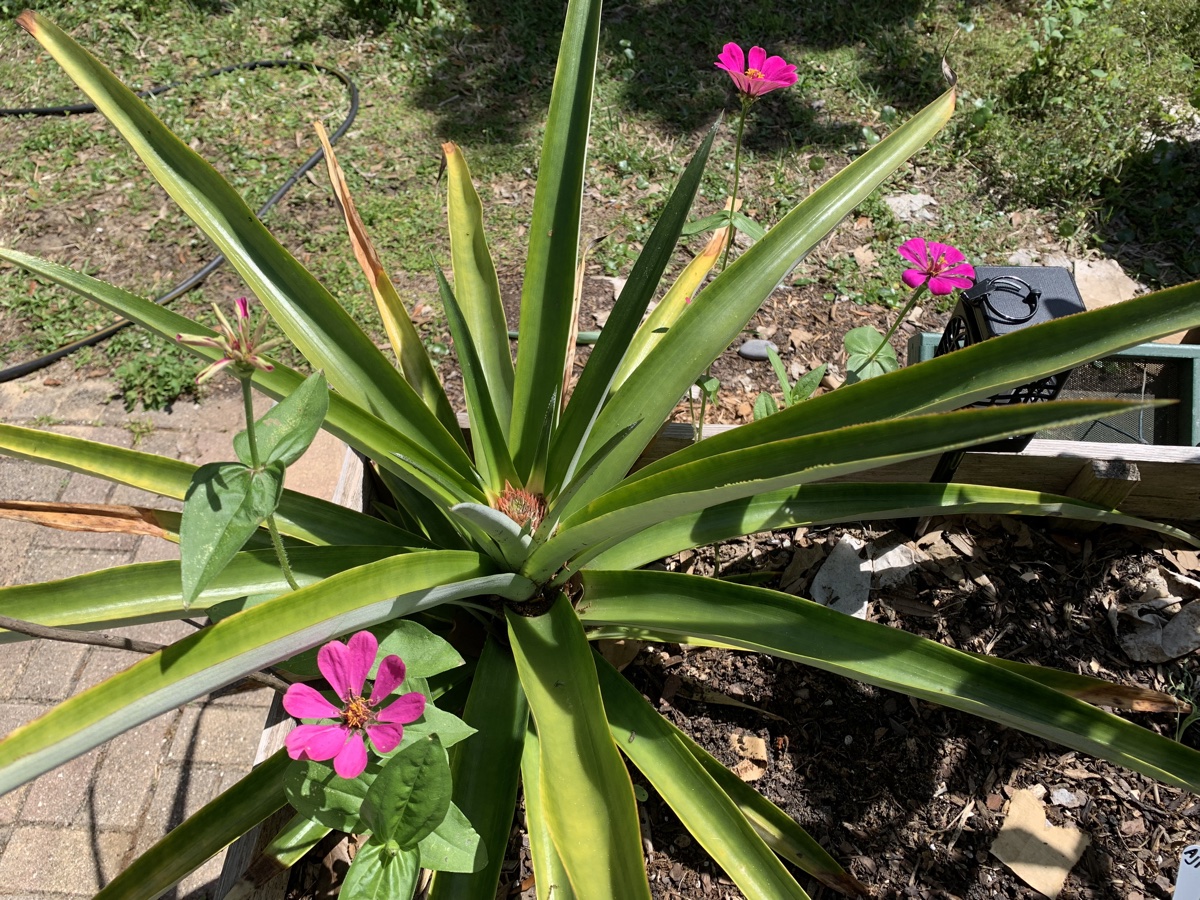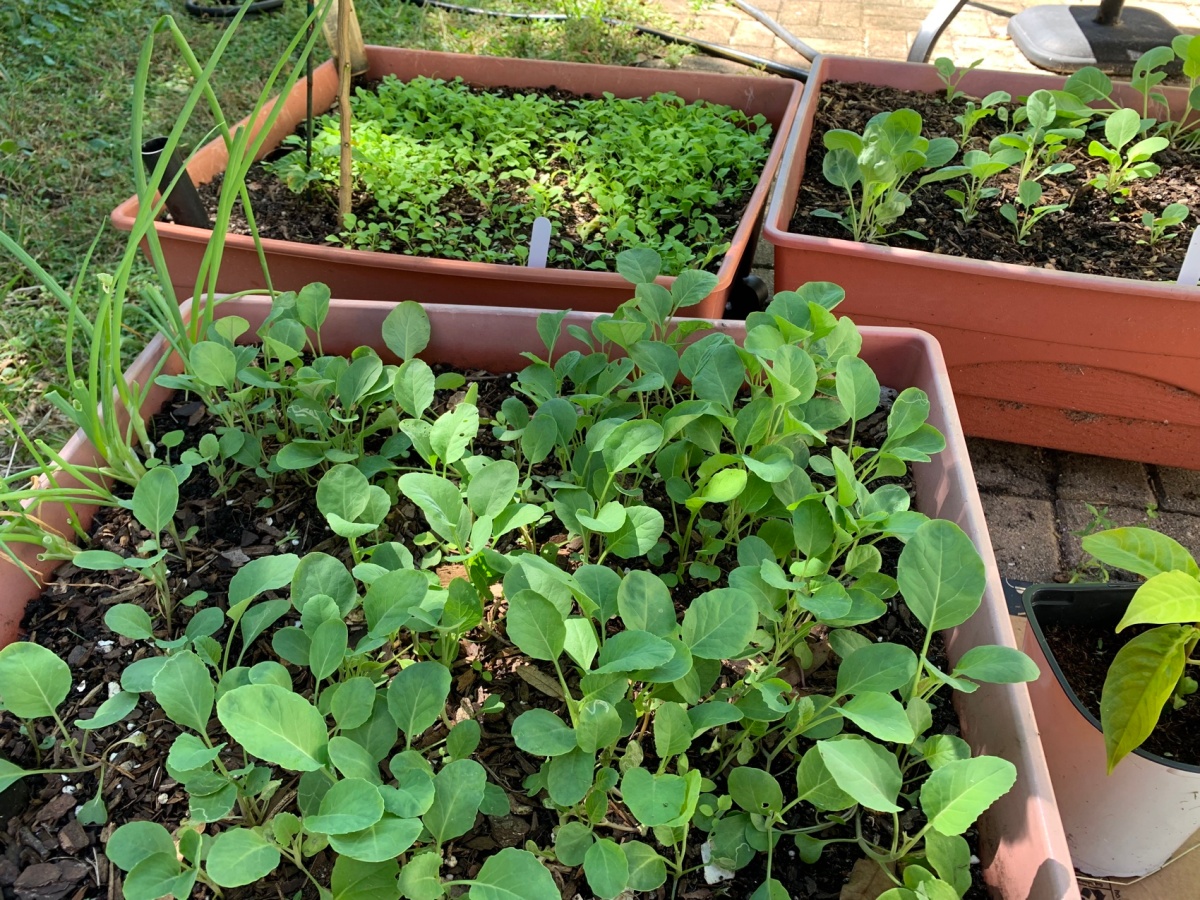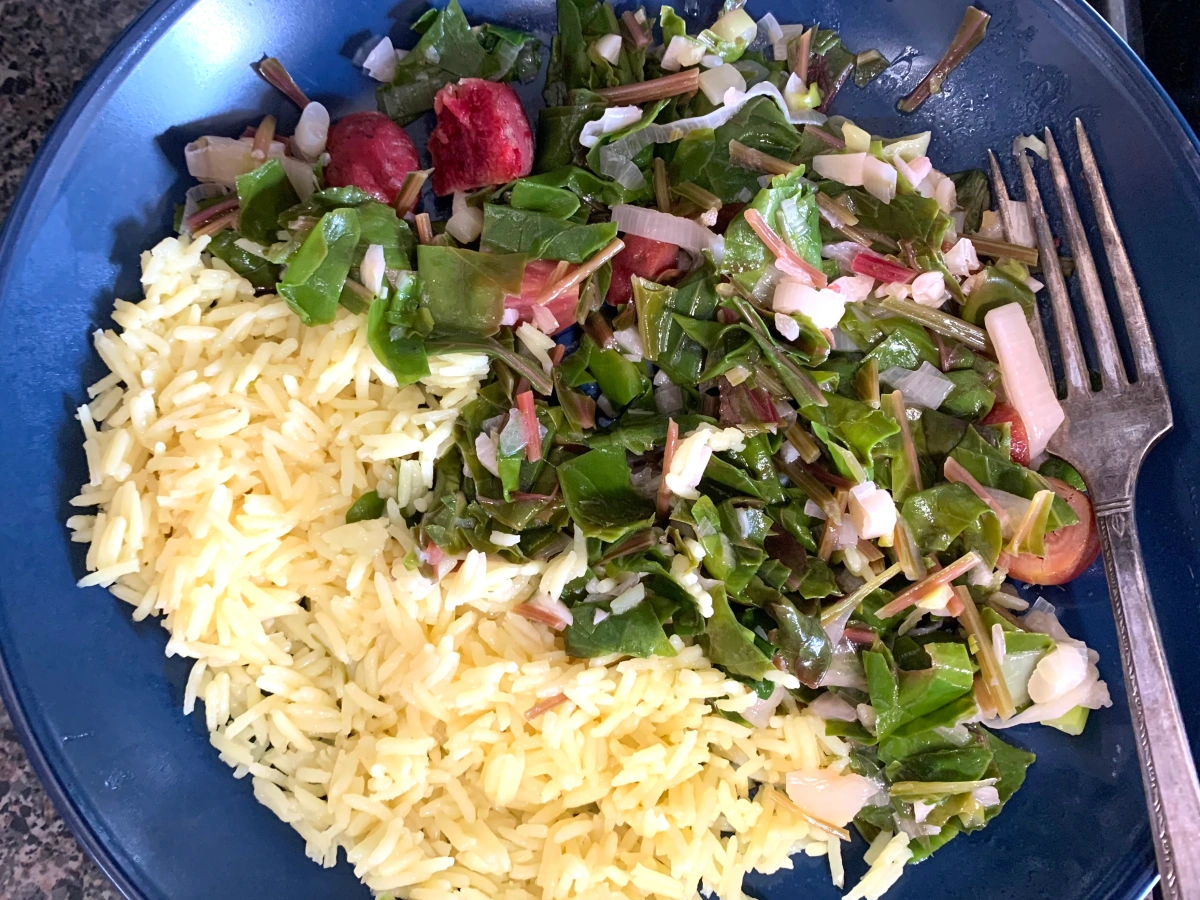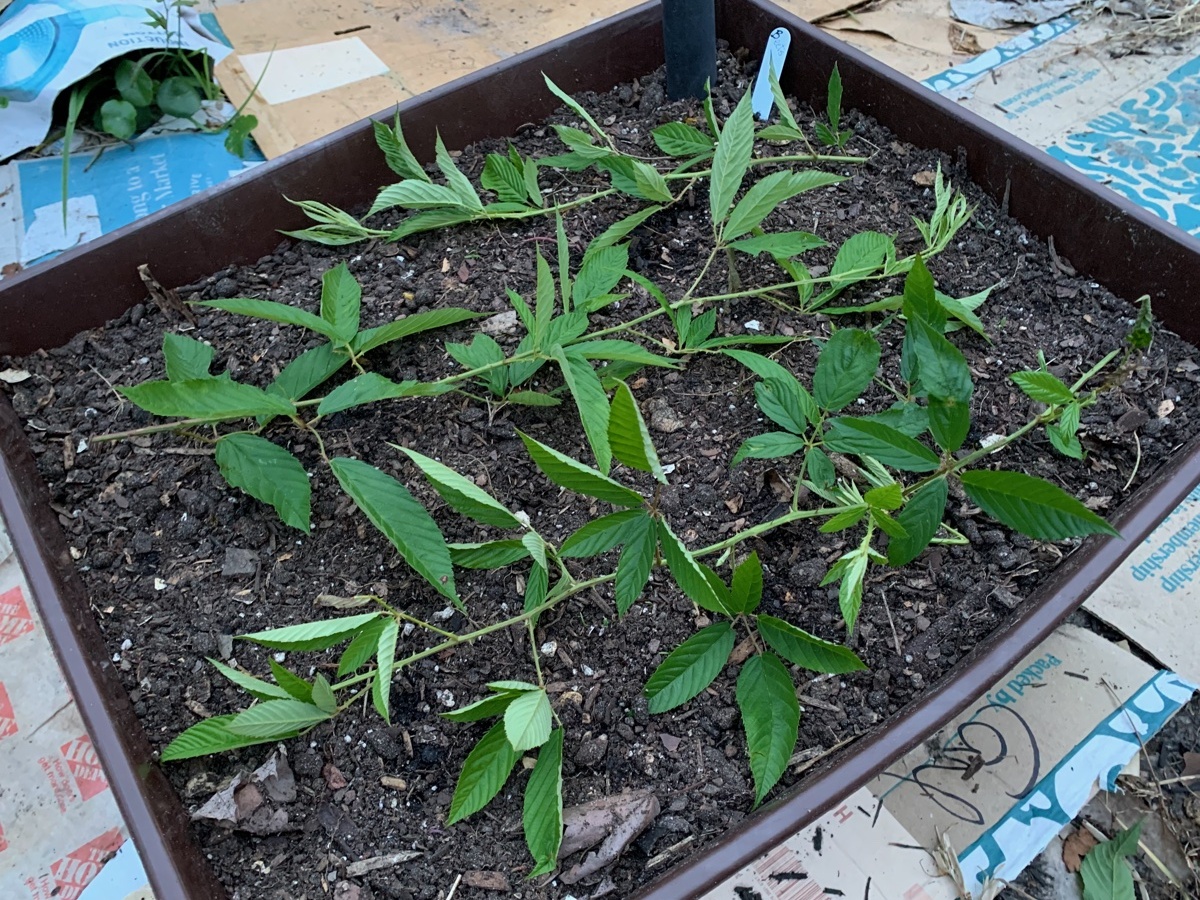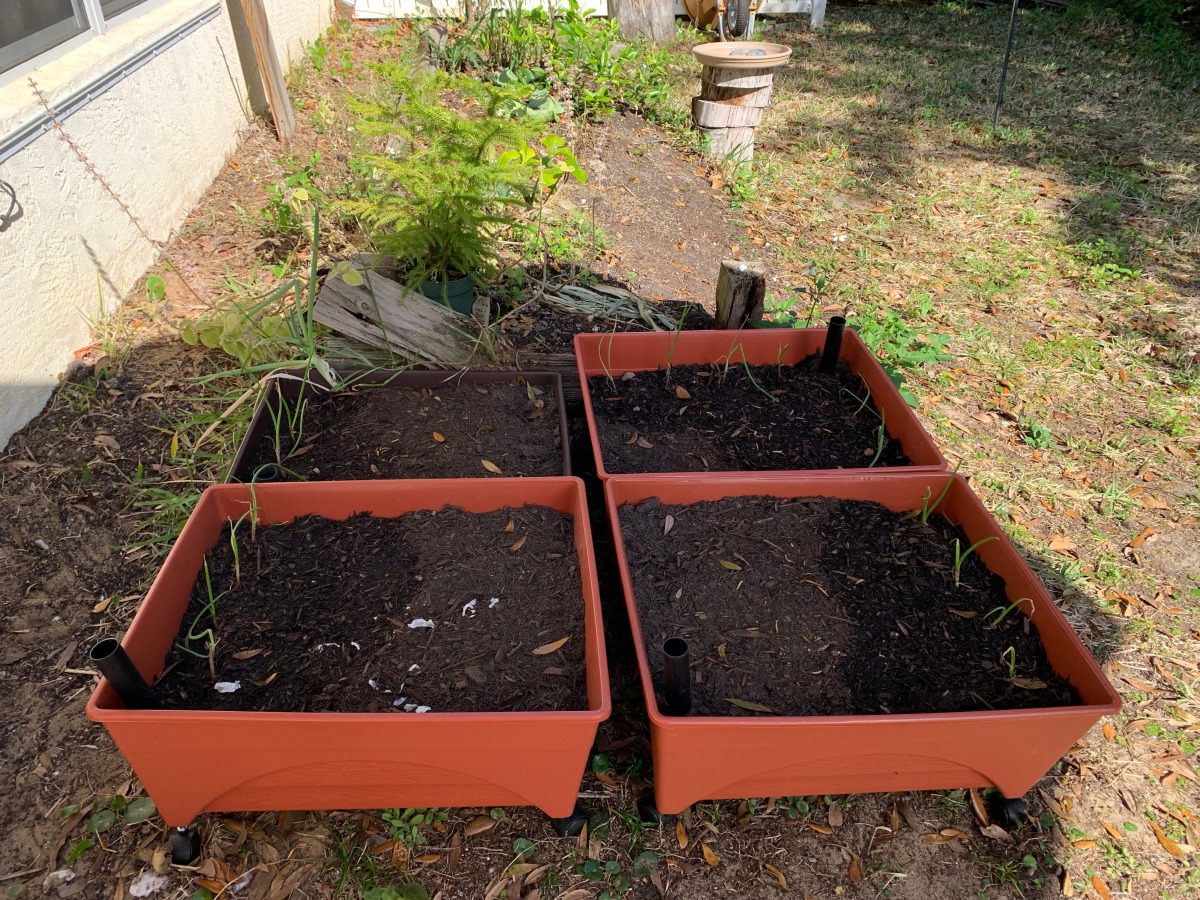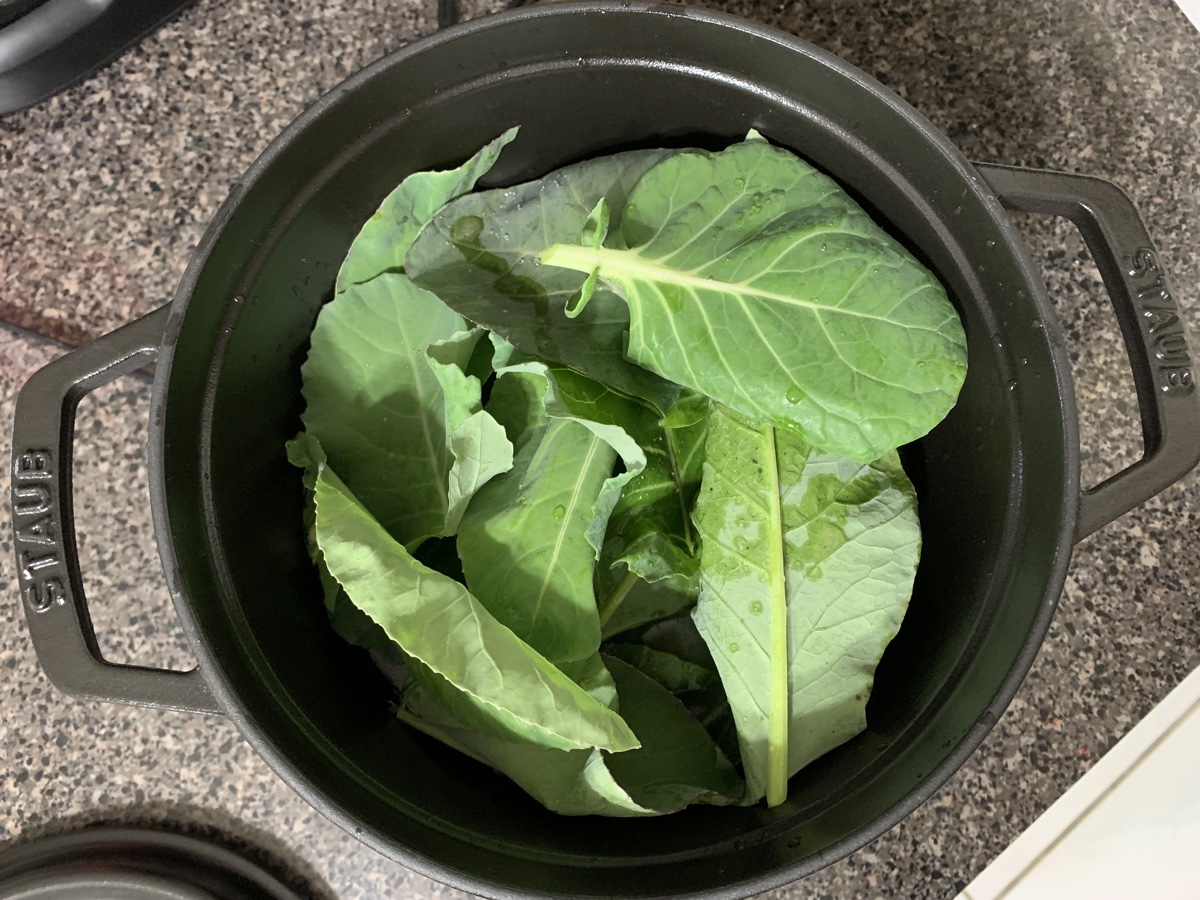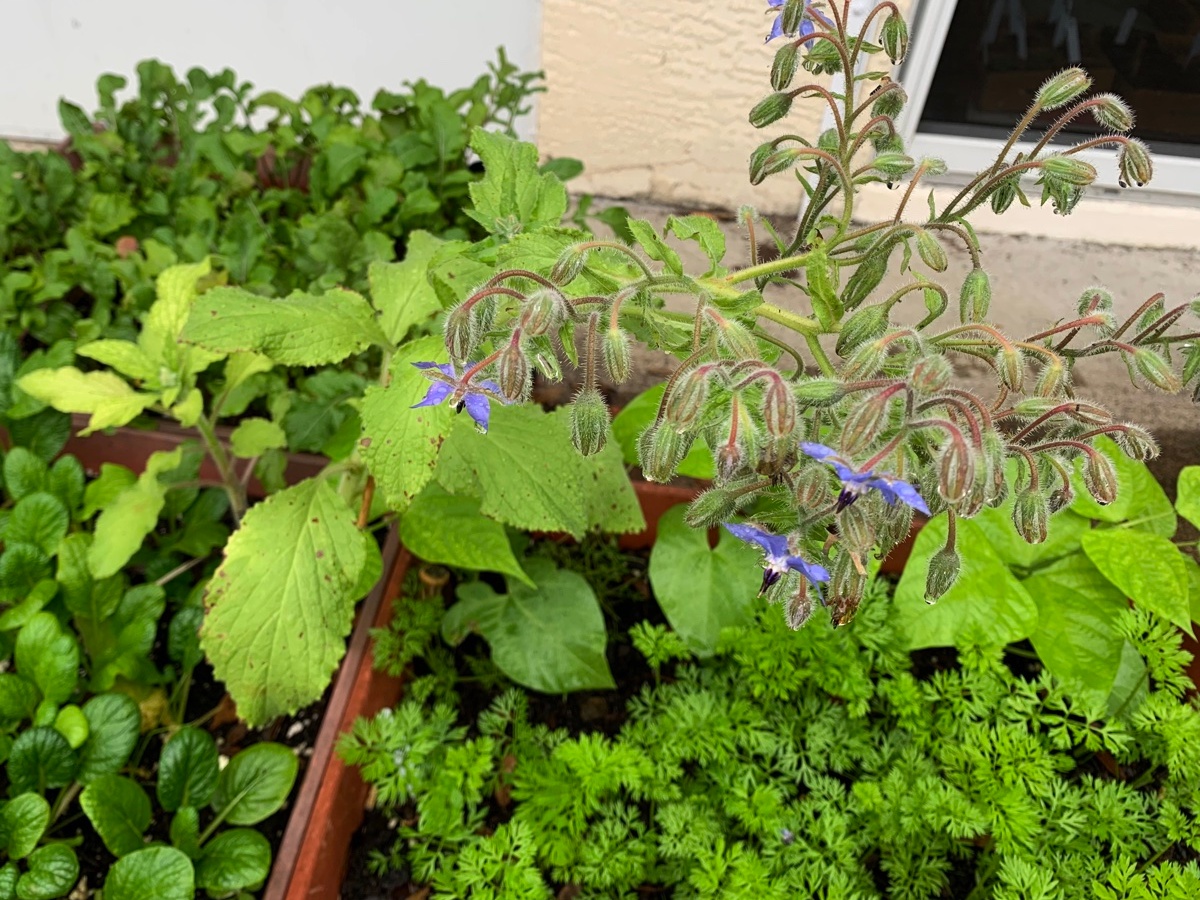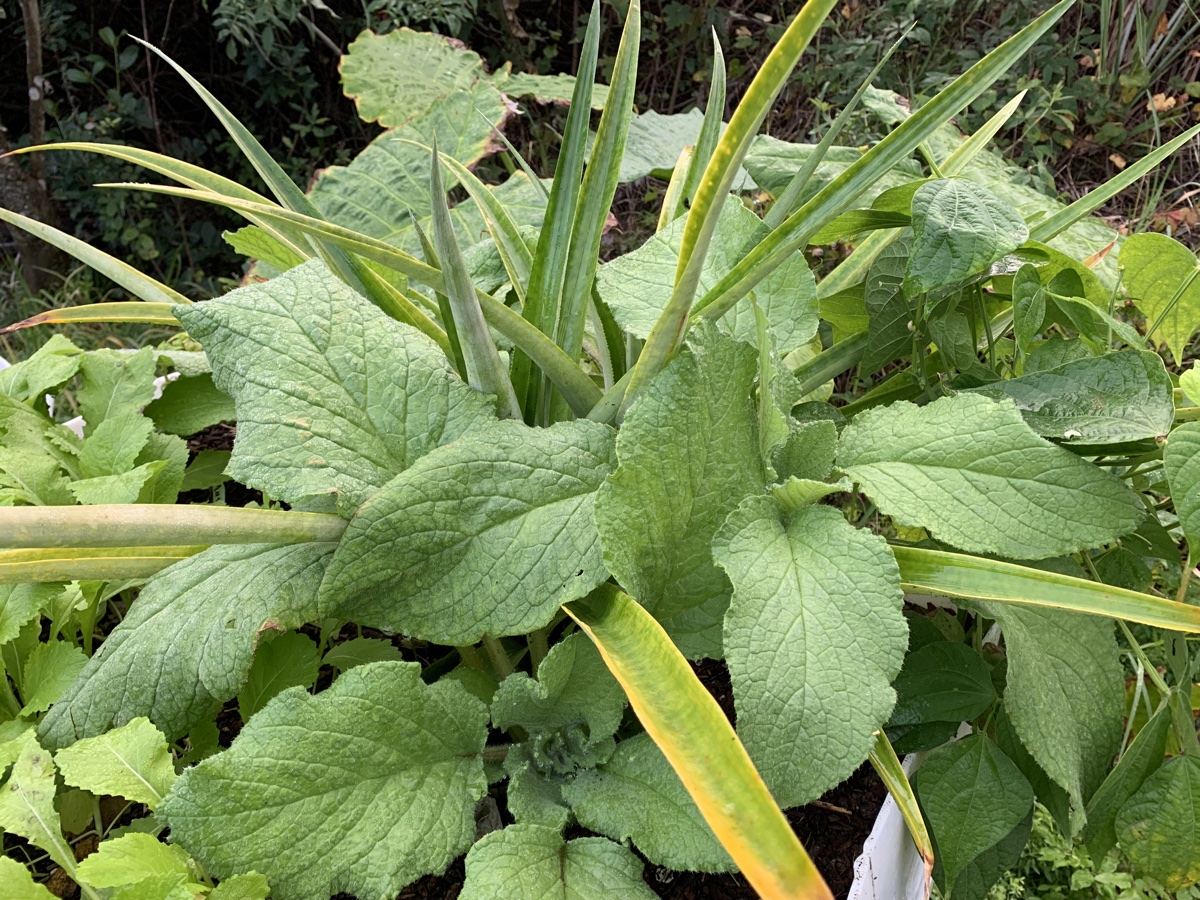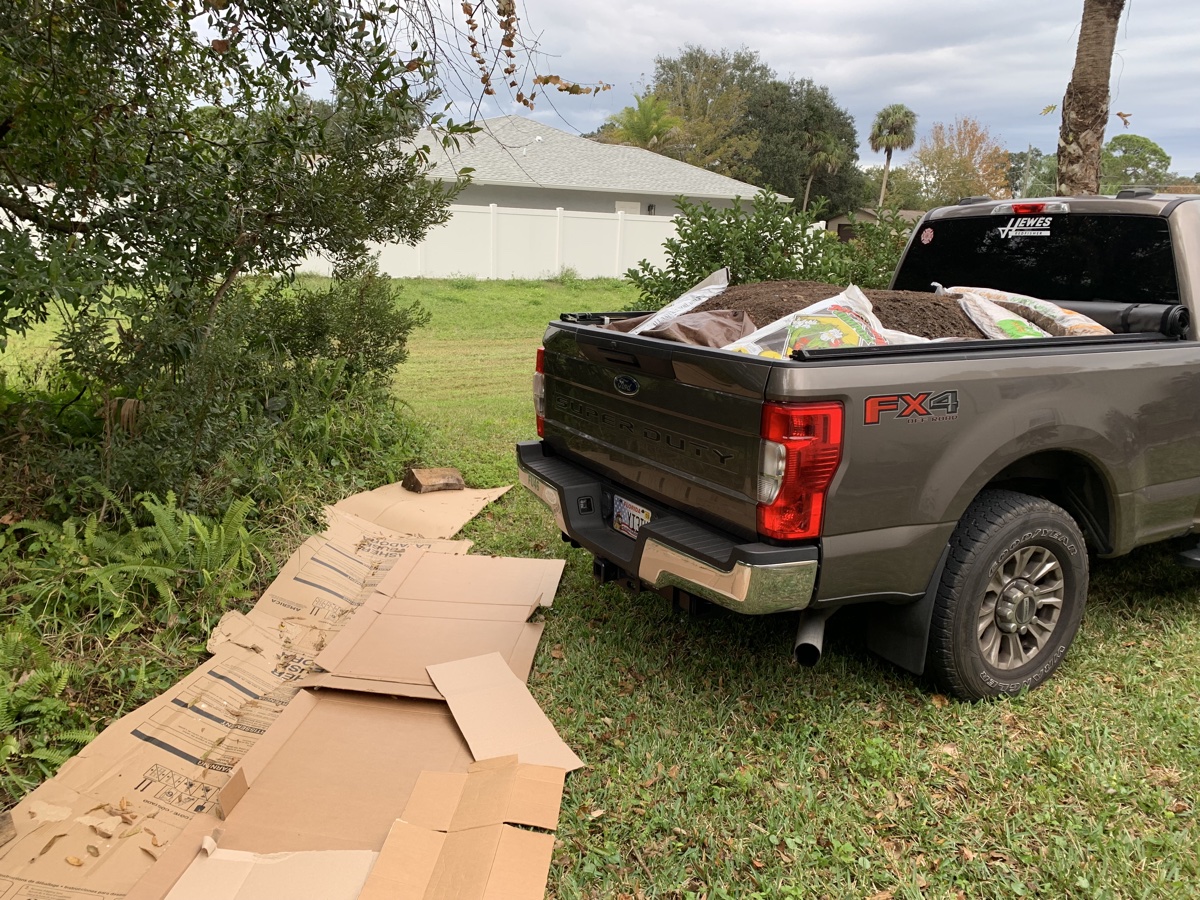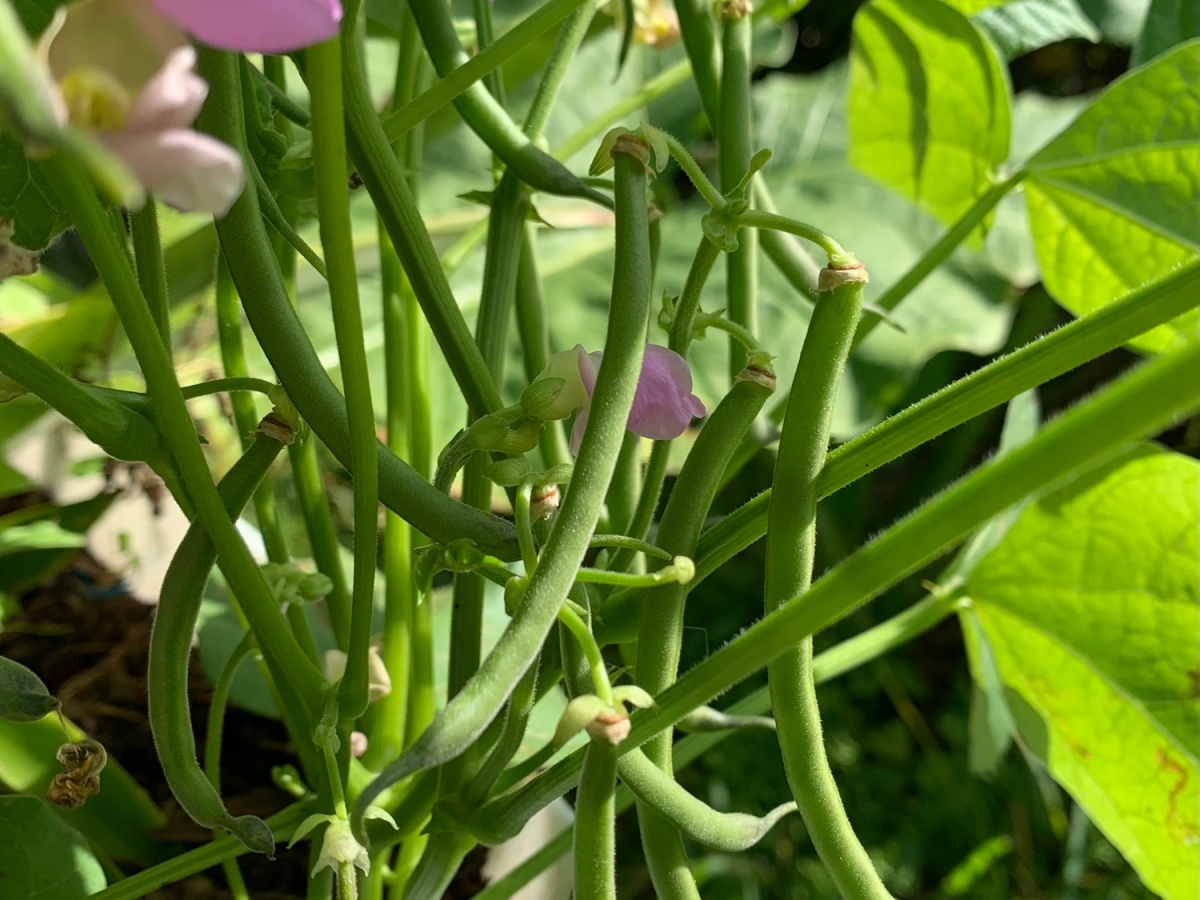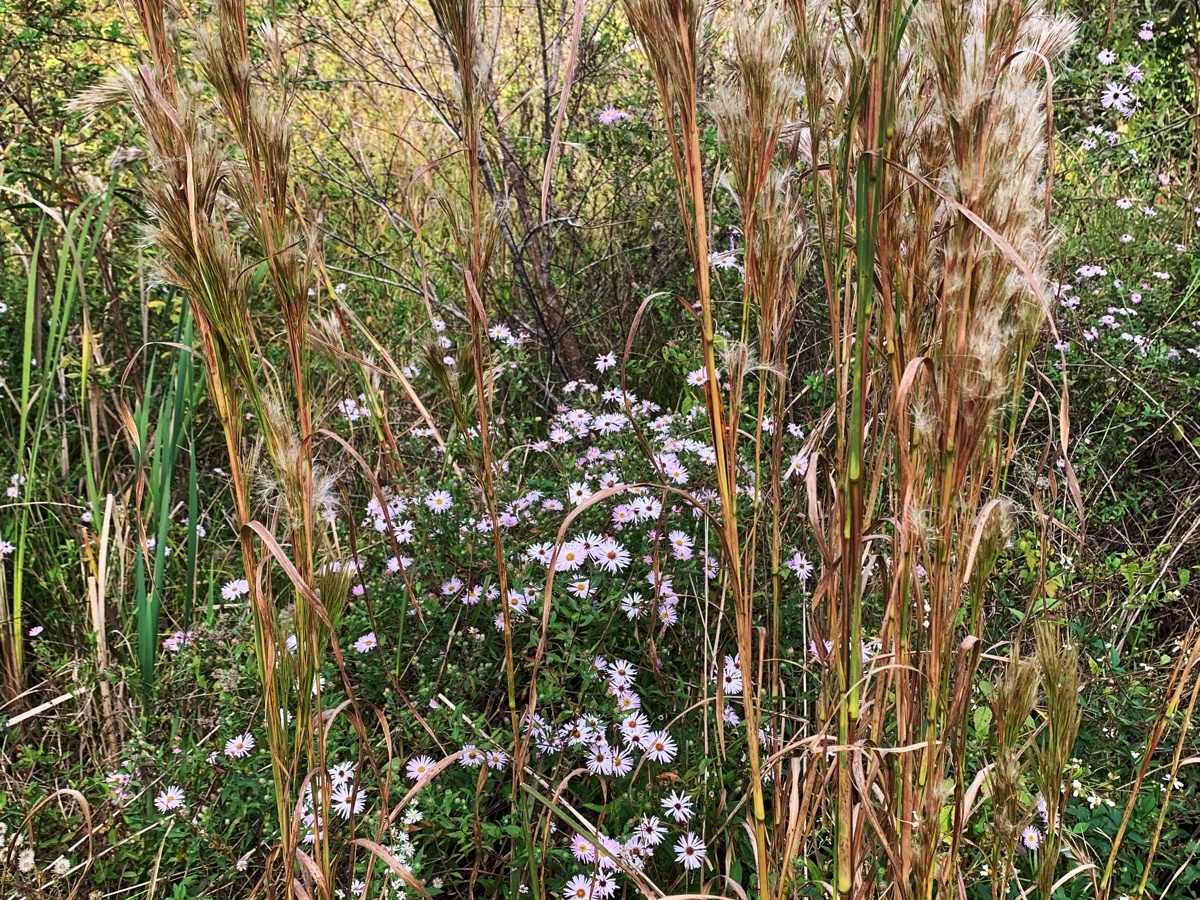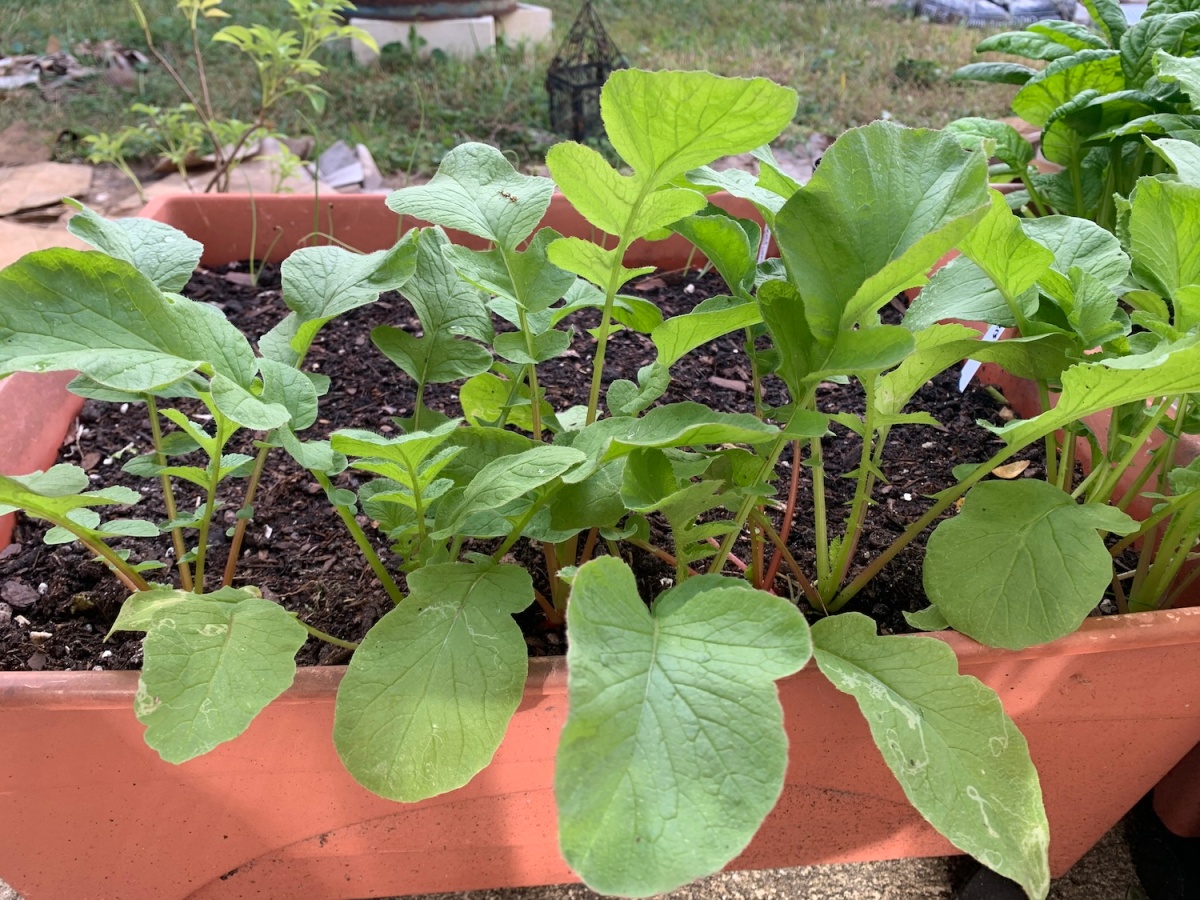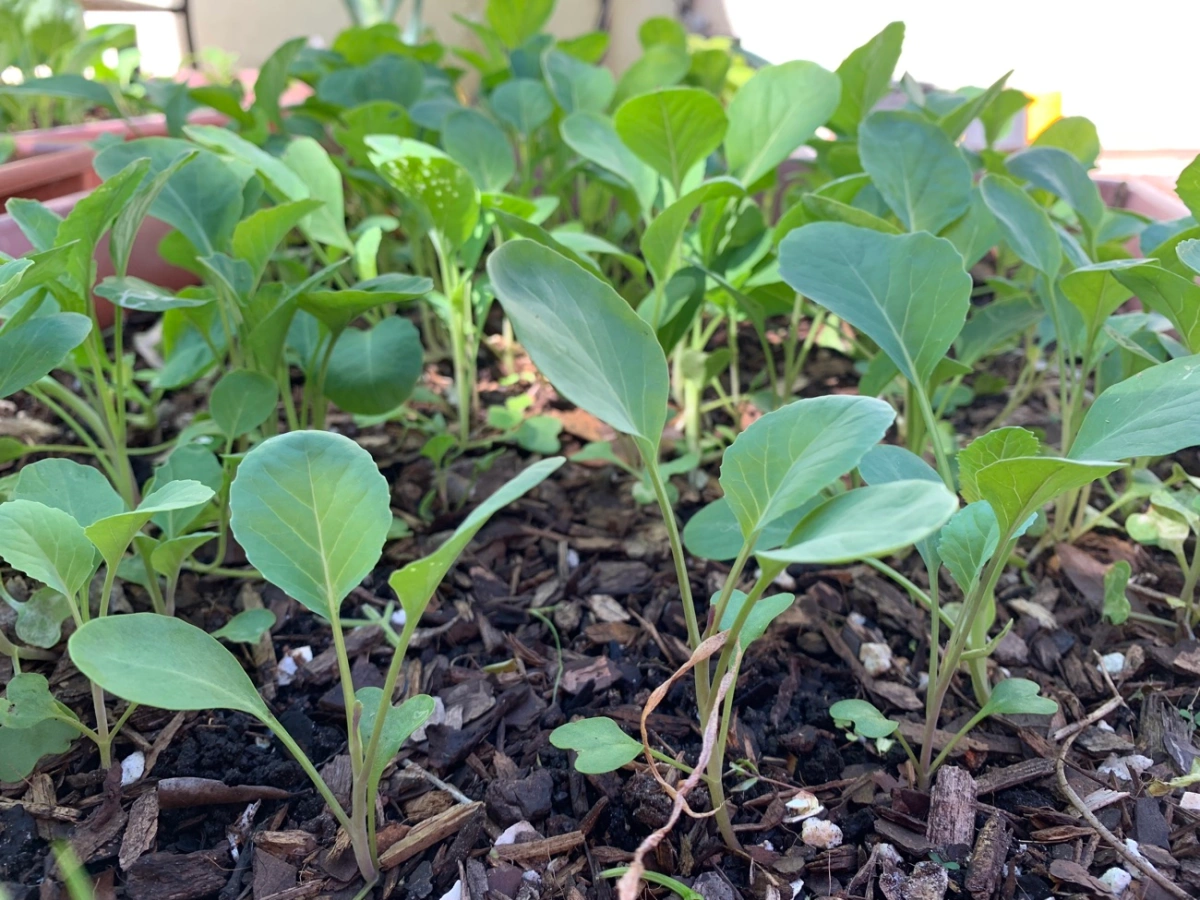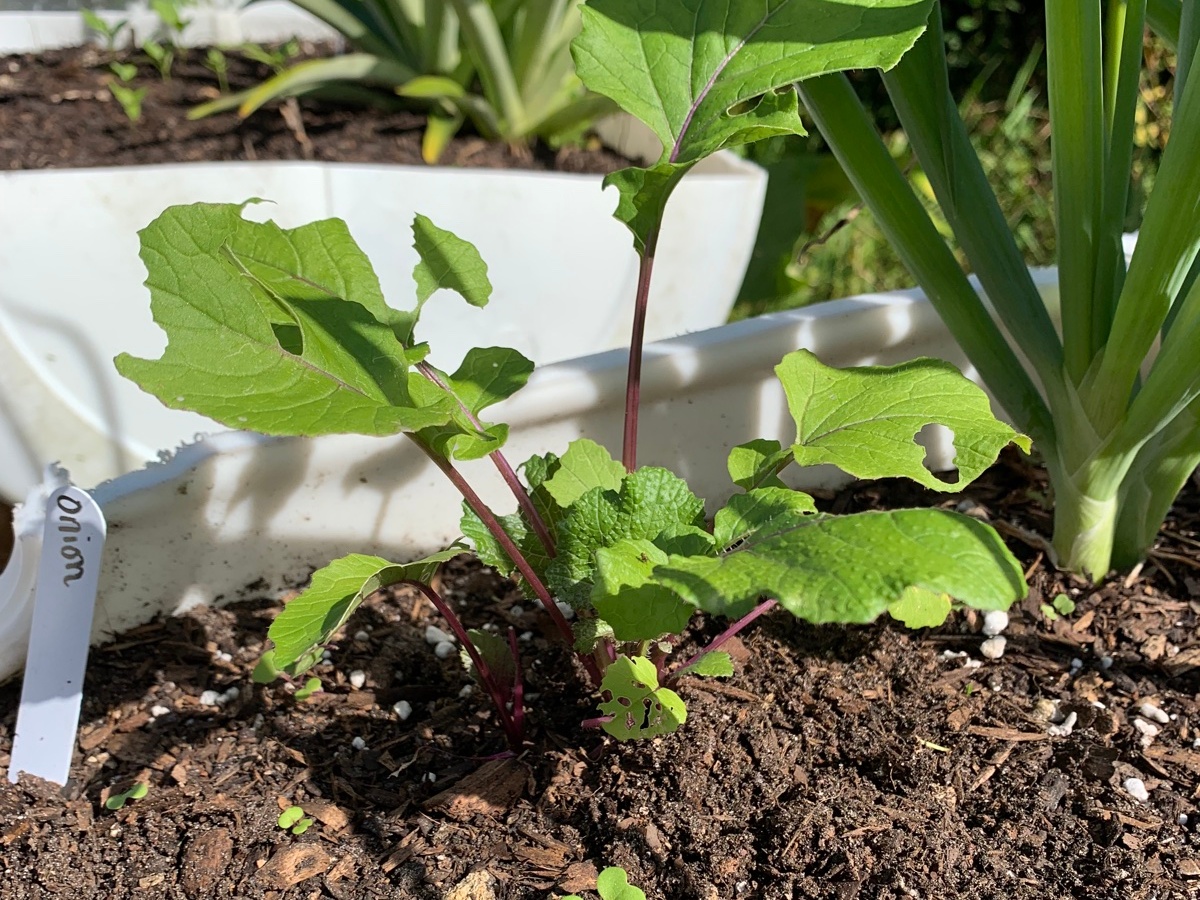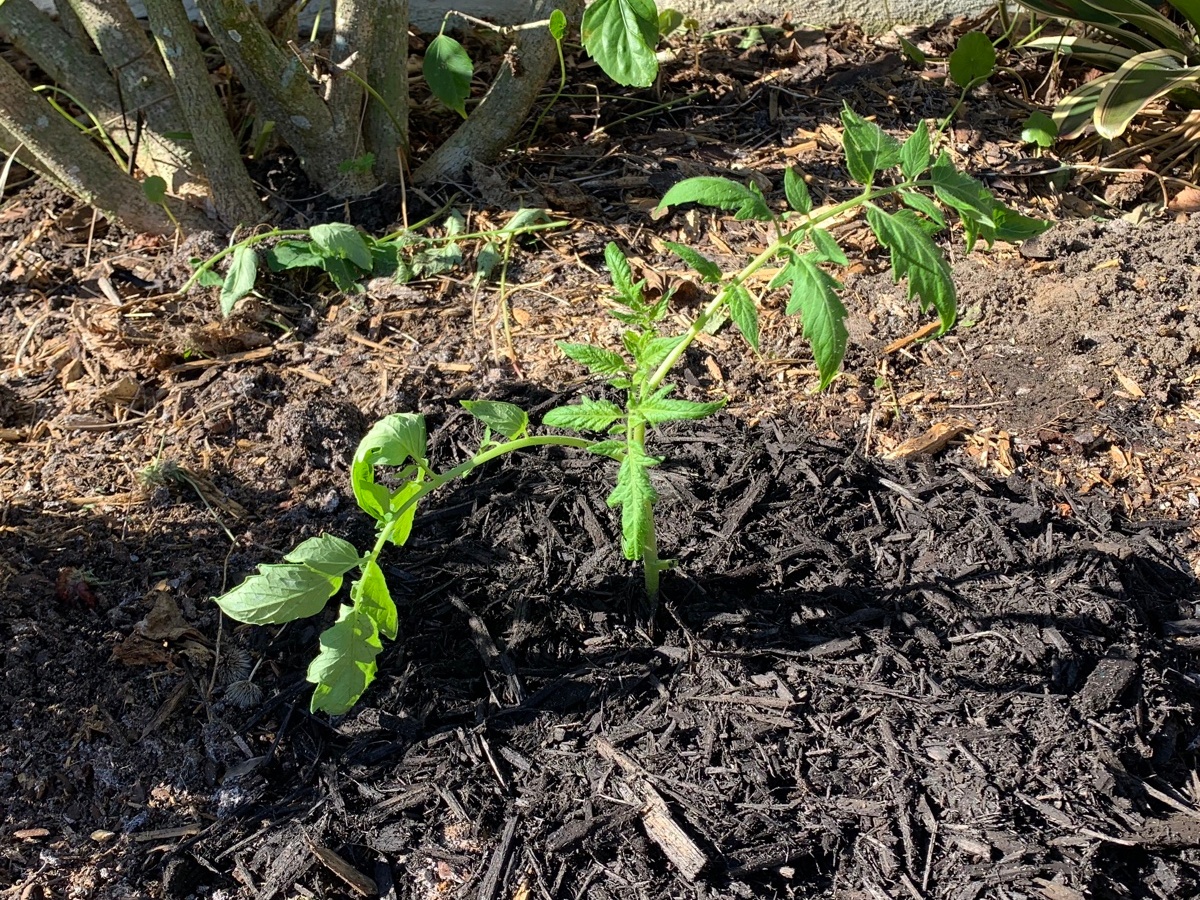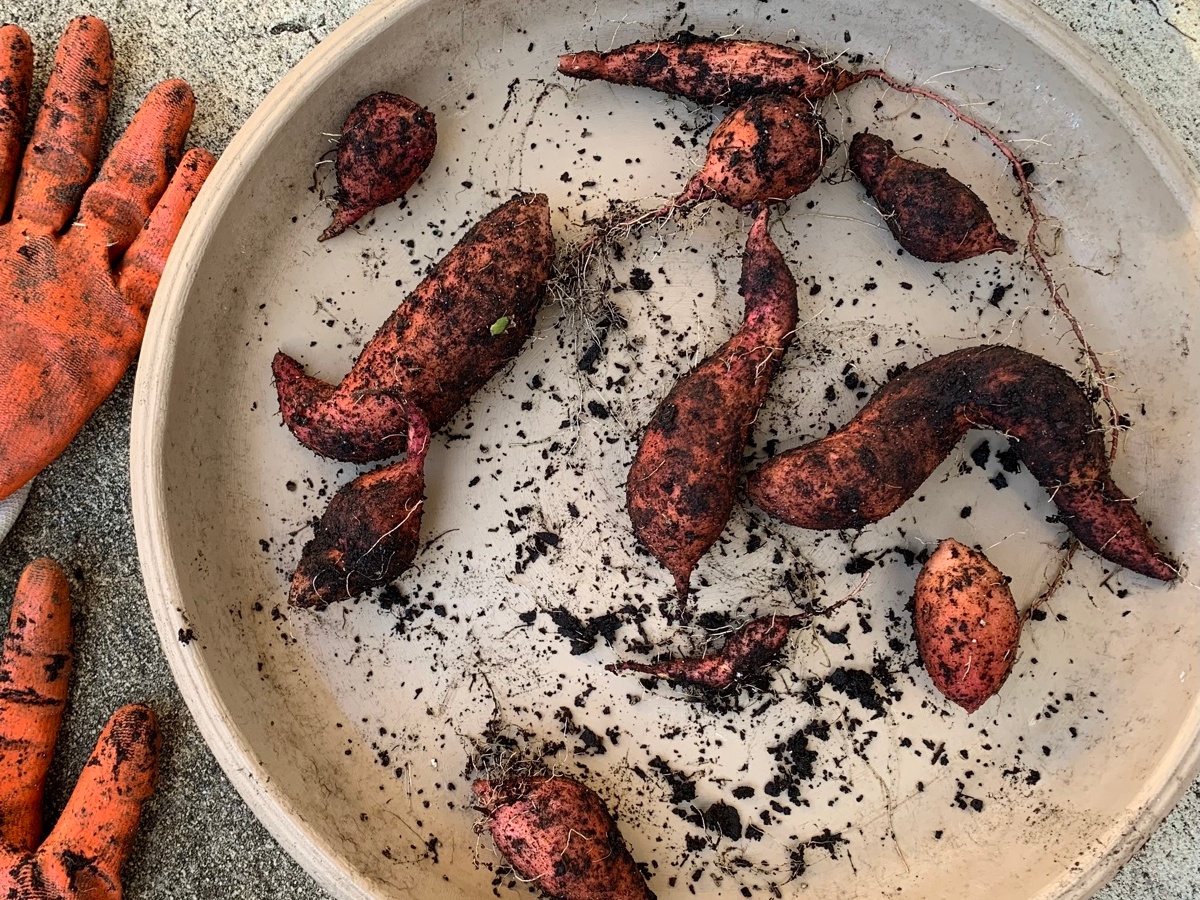On April 8th I planted watermelon seeds. On June 30th I pick three watermelon from my backyard garden.
As I do every morning, I walked the yard and inspected the vegetable garden. Usually I have a couple of okra to cut (yuk), but my main inspection goes to the beautiful watermelons growing. I’ve never in my long life be able to grow watermelon. This year I had four beautiful melons growing.
As I came to the garden I saw that one of the watermelon vines was pulled back from its usual spot, and then I saw the chewed melon. It was the smallest of the four melons, and probably the easiest for the raccoons to get into.

I had three more watermelons which were still okay, but they did show signs of claw marks.
I’d been wondering if I would be able to tell when the watermelons were ready to be picked. The seed packet mentioned a browning of the tendril closest to the melon. I wasn’t sure what that meant, so I watched a video and then realized it was the little, curly thing coming off the vine. Sure enough, the ones nearest all my watermelons were brown. So they were all ready to be picked.

Watermelon, From Baby to Being Picked
It took nearly three months, but was worth the wait to have delicious fruit right from the garden! It’s what we gardeners live for.
Cutting and Eating
I decided to cut the watermelon outside on the patio table. This mainly comes from my fear of slush pouring out instead of the inside being solid.

Many years ago I worked in the produce section of a grocery store. My job one day was to slice watermelon and package it. As I cut into a big melon, all the insides gushed out all over me and the floor! I never forgot it, and always worry whenever I cut a watermelon.
So I did my cutting outdoors, and I was so happy to see the red inside when I first opened the big melon. Then I tasted it, and yum! I’d grown my very first edible watermelons!
I’ve only cut the largest watermelon, but it is delicious. Even if the other two are not good, I am so happy to have had one that is perfect.
I saved a bunch of those big, white seeds. I may try to grow more before Fall because we have months of heat still ahead of us.
This type is the Strawberry Watermelon and I bought the seeds from Southern Exposure Seed Exchange (the link goes there).
